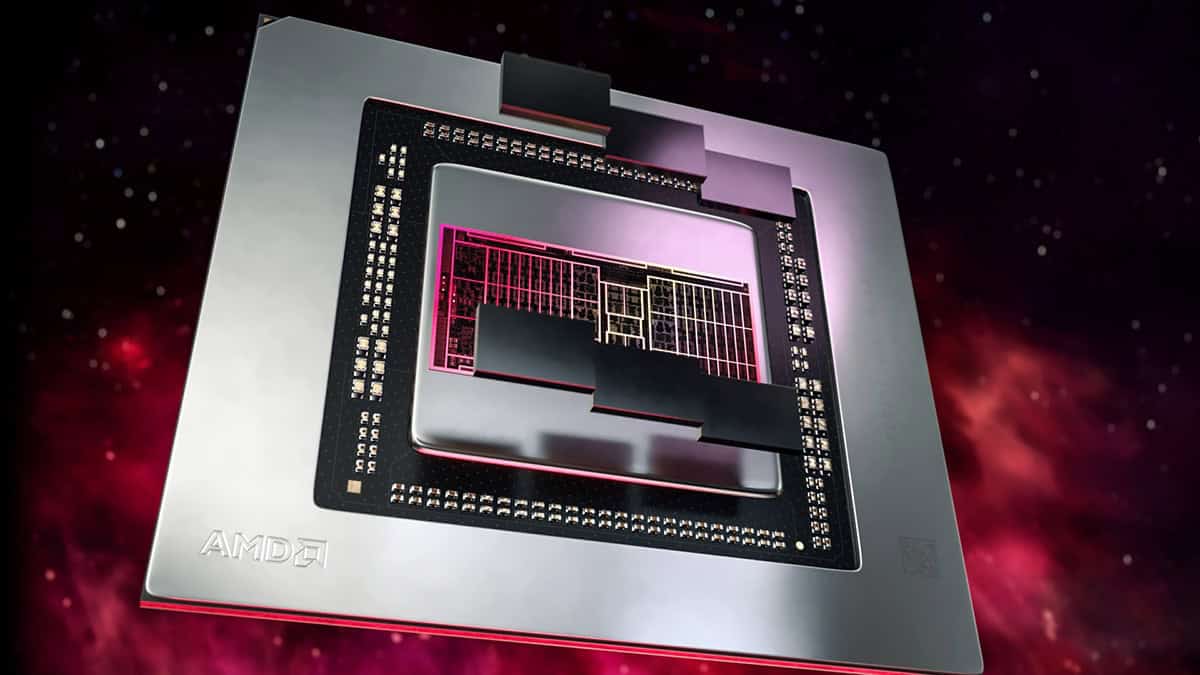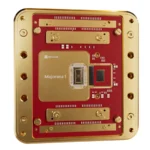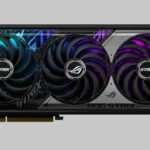AMD is set to unveil its next-generation RDNA 4 graphics architecture on February 28, 2025, marking a pivotal moment in the ongoing battle between Radeon and NVIDIA. The Radeon RX 9000 series promises significant advancements, with early leaks suggesting that the RX 9070 XT could deliver performance rivaling NVIDIA’s RTX 4080, all while maintaining AMD’s reputation for strong price-to-performance value.
What We Know So Far
The upcoming RX 9070 XT and RX 9070 are expected to be early flagship models, set for release in early March. Based on AMD’s history, these GPUs are likely targeting the upper mid-range to high-end segment, competing directly with NVIDIA’s RTX 5070 and 5070 Ti, which are expected to launch around the same timeframe.
AI Upscaling and Ray Tracing—AMD’s Answer to DLSS & RTX
One of the most anticipated improvements in RDNA 4 is AMD’s enhanced AI-based upscaling technology, which serves as an evolution of FidelityFX Super Resolution (FSR). The new AI-assisted rendering aims to bring it closer to NVIDIA’s DLSS 3 and Intel’s XeSS, providing smoother performance at higher resolutions with minimal visual loss.
AMD is also expected to narrow the ray tracing performance gap with NVIDIA. Historically, AMD’s RDNA architecture has lagged in this department, but RDNA 4 introduces optimizations that could push Radeon cards closer to NVIDIA’s RTX-class ray tracing prowess. This is crucial for modern game engines that are increasingly reliant on real-time lighting, reflections, and global illumination techniques.
The Strategic Delay: AMD’s Competitive Play
Unlike previous releases, AMD has taken extra time to optimize both hardware and software, ensuring RDNA 4 delivers next-gen gaming performance without compromises. This delay aligns with their strategy to refine AI-driven rendering, improve power efficiency, and offer competitive performance-per-watt ratios—a key advantage AMD has had over NVIDIA in past GPU generations.
Additionally, AMD is leveraging its deep integration with next-gen consoles like the PlayStation 5 Pro, which is rumored to feature an RDNA 4-based GPU. This means game developers will have more incentive to optimize for Radeon-based hardware, potentially improving performance on PC.
RDNA 4 vs. NVIDIA RTX 5000: The Next Big GPU War
With NVIDIA set to release its RTX 5000 series in early 2025, RDNA 4 enters a highly competitive landscape. While NVIDIA is banking on AI-driven frame generation and superior ray tracing, AMD is countering with a cost-effective, high-performance alternative that prioritizes raw rasterization performance—an area where Radeon GPUs often shine.
If AMD can undercut NVIDIA’s pricing—keeping the RX 9070 XT around $599-$649 while maintaining RTX 4080-level performance, it could pose a serious challenge to NVIDIA’s dominance in the mid-to-high-end market.
Final Thoughts
AMD’s February 28, 2025, reveal of RDNA 4 will set the stage for the next major GPU showdown. With enhanced AI features, improved ray tracing, and competitive pricing, the Radeon RX 9000 series could be AMD’s strongest push yet to reclaim market share.
For gamers and content creators, the real question is: Will RDNA 4 finally close the performance gap with NVIDIA while maintaining Radeon’s legendary value proposition? Stay tuned for AMD’s official reveal to find out.
Key Takeaways
- AMD will reveal the complete RDNA 4 graphics card lineup on February 28, 2025
- The RX 9070 targets RTX 4080 performance levels with enhanced ray tracing capabilities
- New AI upscaling technology debuts in the RX 9000 series
RDNA 4 Architecture and Performance Insights
AMD’s RDNA 4 architecture introduces significant performance improvements through enhanced clock speeds, refined compute units, and advanced AI capabilities. The new architecture powers the upcoming Radeon RX 9000 series graphics cards.
Architecture Overview
The RDNA 4 architecture builds upon its predecessor with higher clock speeds reaching beyond 2.3 GHz. This represents a notable increase from RDNA 3’s typical 2.1-2.3 GHz range.
The architecture features two main GPU variants:
- Navi 44: Entry-level to mid-range solutions
- Navi 48: High-performance segment
These chips utilize improved compute units that deliver better performance per watt compared to previous generations.
GPU Core Innovation
The refined compute units in RDNA 4 incorporate architectural optimizations that boost gaming performance. AMD has implemented enhanced instruction processing capabilities.
The GPU cores feature:
- Higher IPC (Instructions Per Clock)
- Improved power efficiency
- Enhanced shader processing
The new core design enables faster rendering and more efficient workload handling.
Memory and Bandwidth
RDNA 4 supports multiple memory configurations to address different market segments:
Memory Options:
- GDDR6
- GDDR6X
- Potential GDDR7 support
The memory subsystem uses a 256-bit bus width for optimal bandwidth utilization. This configuration balances cost and performance requirements.
Ray Tracing Capabilities
The architecture features upgraded ray tracing hardware. New dedicated RT cores process light, shadow, and reflection calculations more efficiently.
Key improvements include:
- Faster BVH traversal
- Enhanced ray-box intersection testing
- Improved ray tracing performance per watt
These enhancements make ray-traced games run smoother than on previous generations.
AI-Driven Technologies
RDNA 4 integrates dedicated AI accelerators for machine learning tasks. The architecture supports AMD’s Adrenalin AI features and machine-learning-based upscaling technologies.
AI Features:
- Neural network processing
- FSR 4 optimization
- AI-powered image quality enhancements
The AI hardware accelerates both gaming and content creation workloads.







